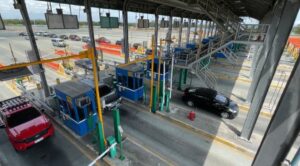It appears that more towns and agencies are putting in place cashless toll collection systems. Some jurisdictions utilize electronic readers, like NLEX, to automatically charge motorists for using roads and crossing bridges. Others employ equipment that takes pictures of license plates. Drivers are paid based on these records, and the photos are used to track trips.
According to the Department of Public Works and Highways, a reputable government department, only about half of the country’s 15 tolled highways use cashless tolling. In the coming years, there will likely be a noticeable increase in the trend toward electronic toll collection.
Here are some potential effects of this system on your projects, both good and bad. This article will assist you in determining whether installing an electronic toll payment system on your bridges or highways is a wise decision.
Disadvantages
Motorists
Drivers have faced many difficulties as a result of the switch to automated toll collecting.
The major problem is that even if buying and refilling automatic toll passes is now simpler than ever, many drivers either forget to do so or decide not to. They must wait in long traffic lines to pay with cash because there are fewer (or no) toll lanes on bridges and roads that accept cash, or they receive mail-in tickets and must pay steep fines for not paying their tolls.
Drivers miss the following services when toll collectors are not present in addition to collecting, counting, and making change for money:
- Warnings. When there are accidents or other problems that can result in traffic slowdowns on bridges and roads, toll collectors alert vehicles.
- Directions. Although GPS is now commonplace, many drivers still prefer to acquire their directions from actual people who are familiar with the region, especially senior drivers. Additionally, people like to seek confirmation from a third party that the recommended routes by their GPS devices are accurate and effective.
- Monitoring. Intoxicated drivers and those who shouldn’t be driving are observed by toll collectors, who then report them to the police.
- Advice. Online resources abound with knowledge regarding lodging options, dining establishments, and petrol stations. However, a lot of tourists value individualized guidance when deciding on a place to stay, a restaurant, or a technician who can provide the necessary automobile services.
- Tips. The toll staff frequently offers suggestions on how to travel more quickly and effectively.
- Friendliness. Many locals appreciate a friendly “good morning” or “good night” from a familiar face in a toll booth at the start or conclusion of the day.
- Urgent assistance. When drivers lack the funds to pay for tolls, toll collectors have been known to utilize their funds. It might also be a loan. Sometimes it’s a gift, though.
Additional issues for drivers include:
- Surprises. People may track their toll expenses in real-time when they pay with cash. They might not be aware of how much they are paying to cross bridges and use highways with cashless systems until they receive their statements.
- Privacy concerns: Many people and advocacy groups worry that automated toll collecting gives people a method to be tracked as they go from place to place.
- billing mistakes. When they are charged incorrectly or are subjected to unforeseen fines that may be far more than the real tolls, drivers have limited recourse.
- With proper signage, effective communication, knowledgeable customer service agents, and more traveler advising kiosks at rest areas, many of these problems can be avoided.
For toll booth operators
When toll collectors are forced to leave their reliable jobs, their conditions frequently get worse. It’s challenging for many displaced workers to locate positions that pay as much or offer equivalent benefits, even with assistance from their labor unions. To avoid the negative effects of a forced job move, give toll workers plenty of time to transfer to new positions.
Advantages
Motorists
For drivers, cashless tolling has several advantages, including:
- Convenience. The majority of individuals choose online bill payment or pass loading over searching for cash while driving and standing in line to pay tolls.
- Less waiting around. By removing the human element, cashless tolling keeps traffic moving through toll plazas.
- increased security. In toll plazas without payment machines, drivers are less likely to abruptly switch lanes to find shorter toll lines or to brake or slow down as they approach the toll booths. Accidental occurrences are less likely as a result.
- Enhanced traffic. Using electronic toll collecting, authorities can adjust tolls to manage traffic. Drivers are deterred from entering congested locations by higher tolls, while they are encouraged to utilize less congested, albeit frequently less convenient, bridges and roads by cheaper tolls.
Make sure to explain these advantages to drivers whenever you introduce an electronic system.
For toll booth operators
- Improved workplace security. Frequently, robberies, harassment, and unwelcome advances are committed against toll collectors. It helps to stop crimes against them by placing them in different employment.
- Improved usage of abilities. When people move from toll booth occupations to other roles within their organizations, they typically wind up performing work that is more rewarding and interesting. This involves controlling traffic, guaranteeing safety and security, and offering assistance in times of need.
- Greater satisfaction at work. The boredom and tension of dealing with unpleasant drivers make toll-collecting professions mentally draining. People who switch to other occupations typically have less stress and greater enjoyment at work.
Promote these advantages to help people feel less anxious about changing jobs.
Environment
It has been demonstrated that electronic toll collection lowers pollution. When cars idle in toll booths, they discharge pollutants into the air that pollute the environment and cause global warming. When vehicles can move past toll plazas without stopping, the problem is solved. In the process of switching to a new cashless system, emphasize this benefit. It will appeal to drivers who are concerned about the environment.
Conclusion
The fact is that there are currently a lot of cashless tolling options available, including commercially available software that can help back offices by automatically interpreting license plate photos or by correlating plate numbers with current locations to improve invoicing accuracy. These and other technologies can contribute to the implementation of cashless tolling on more highways.
The concept of stopping to pay with cash at a tollbooth will seem like a thing of the past in ten or twenty years thanks to the widespread adoption of in-car and satellite-based electronic payments. Building the foundation for tomorrow’s electronic toll roads today will allow agencies to make great progress till then.





